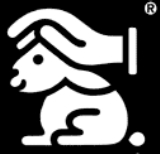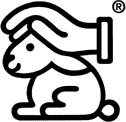
Testing cosmetics on animals
Encyclopedia
Testing cosmetics on animals is a form of animal testing
, intended to ensure the safety and hypoallergenic
properties of the products for use by humans. Because of the harm done to the animal subjects, this testing is opposed by animal rights
activists and others, and is banned in much of the European Union
.
may involve testing either a finished product or the individual ingredients of a finished product on animals, often rabbits, but also mice
, rats
, and other animals. In some cases, the products or ingredients are applied to the mucous membranes of the animal, including eyes, nose, and mouth, to determine whether they cause allergic or other reactions.
Re-using existing test data obtained from previous animal testing is generally not considered to be cosmetic testing on animals; however, the acceptability of this to opponents of testing is inversely proportional to how recent the data is.
laws in most countries to show their products are not toxic and dangerous to public health, and that the ingredients are not dangerous in large quantities, such as when in transport or in the manufacturing plant. In some countries, it is possible to meet these requirements without any further tests on animals. In other countries, it may require animal testing to meet legal requirements. The United States and Japan are frequently criticized for their insistence on stringent safety measures, which often requires animal testing.
Some retailers distinguish themselves in the marketplace by their stance on animal testing. The Co-operative Group
in the UK maintains a cosmetic-testing website,
http://www.co-operative.coop/food/ethics/Animal-welfare/Testing/ which includes statements from all their suppliers about the extent of their animal testing.
 France, which is home to the world's largest cosmetics company, L'Oréal
France, which is home to the world's largest cosmetics company, L'Oréal
, has protested the proposed ban by lodging a case at the European Court of Justice
in Luxembourg
, asking that the ban be quashed. The ban is also opposed by the European Federation for Cosmetics Ingredients, which represents 70 companies in Switzerland, Belgium, France, Germany and Italy.
that, when administered intravenously, is lethal to humans) to establish potency http://www.manchesteronline.co.uk/men/news/s/156/156795_animal_rights_man_faces_jail_over_lab_raid.html http://web.archive.org/web/20060217084038/http://www.animalaid.org.uk/news/2004/0401boto.htm http://www.sarconline.co.uk/modules.php?op=modload&name=News&file=article&sid=129&mode=thread&order=0&thold=0&POSTNUKESID=f070fc85519cfcb46ad4f3d2d92abb1c.
This presumes that cosmetics companies are already using computer modeling and cell culture
s to simulate human tissue, two techniques that have had ambiguous utility in discovering problems early. Supporters of animal testing say that neither can fully replace live human or non-human animal tests.
Animal testing
Animal testing, also known as animal experimentation, animal research, and in vivo testing, is the use of non-human animals in experiments. Worldwide it is estimated that the number of vertebrate animals—from zebrafish to non-human primates—ranges from the tens of millions to more than 100 million...
, intended to ensure the safety and hypoallergenic
Hypoallergenic
Hypoallergenic, meaning "below normal" or "slightly" allergenic, was a term first used in a cosmetics campaign in 1953. It is used to describe items that cause or are claimed to cause fewer allergic reactions...
properties of the products for use by humans. Because of the harm done to the animal subjects, this testing is opposed by animal rights
Animal rights
Animal rights, also known as animal liberation, is the idea that the most basic interests of non-human animals should be afforded the same consideration as the similar interests of human beings...
activists and others, and is banned in much of the European Union
European Union
The European Union is an economic and political union of 27 independent member states which are located primarily in Europe. The EU traces its origins from the European Coal and Steel Community and the European Economic Community , formed by six countries in 1958...
.
Definition
Using animal testing in the development of cosmeticsCosmetics
Cosmetics are substances used to enhance the appearance or odor of the human body. Cosmetics include skin-care creams, lotions, powders, perfumes, lipsticks, fingernail and toe nail polish, eye and facial makeup, towelettes, permanent waves, colored contact lenses, hair colors, hair sprays and...
may involve testing either a finished product or the individual ingredients of a finished product on animals, often rabbits, but also mice
MICE
-Fiction:*Mice , alien species in The Hitchhiker's Guide to the Galaxy*The Mice -Acronyms:* "Meetings, Incentives, Conferencing, Exhibitions", facilities terminology for events...
, rats
RATS
RATS may refer to:* RATS , Regression Analysis of Time Series, a statistical package* Rough Auditing Tool for Security, a computer program...
, and other animals. In some cases, the products or ingredients are applied to the mucous membranes of the animal, including eyes, nose, and mouth, to determine whether they cause allergic or other reactions.
Re-using existing test data obtained from previous animal testing is generally not considered to be cosmetic testing on animals; however, the acceptability of this to opponents of testing is inversely proportional to how recent the data is.
Legal requirements
Due to the strong public backlash against cosmetic testing on animals, most cosmetic manufacturers say their products are not tested on animals. However, they are still required by trading standards and consumer protectionConsumer protection
Consumer protection laws designed to ensure fair trade competition and the free flow of truthful information in the marketplace. The laws are designed to prevent businesses that engage in fraud or specified unfair practices from gaining an advantage over competitors and may provide additional...
laws in most countries to show their products are not toxic and dangerous to public health, and that the ingredients are not dangerous in large quantities, such as when in transport or in the manufacturing plant. In some countries, it is possible to meet these requirements without any further tests on animals. In other countries, it may require animal testing to meet legal requirements. The United States and Japan are frequently criticized for their insistence on stringent safety measures, which often requires animal testing.
Some retailers distinguish themselves in the marketplace by their stance on animal testing. The Co-operative Group
The Co-operative Group
The Co-operative Group Ltd. is a United Kingdom consumer cooperative with a diverse range of business interests. It is co-operatively run and owned by its members. It is the largest organisation of this type in the world, with over 5.5 million members, who all have a say in how the business is...
in the UK maintains a cosmetic-testing website,
http://www.co-operative.coop/food/ethics/Animal-welfare/Testing/ which includes statements from all their suppliers about the extent of their animal testing.
European Union bans
Testing of cosmetics on animals is banned in the Netherlands, Belgium, and the United Kingdom, and in 2002, after 13 years of discussion, the European Union (EU) agreed to phase in a near-total ban on the sale of animal-tested cosmetics throughout the EU from 2009, and to ban all cosmetics-related animal testing.
L'Oréal
The L'Oréal Group is the world's largest cosmetics and beauty company. With its registered office in Paris and head office in the Paris suburb of Clichy, Hauts-de-Seine, France, it has developed activities in the field of cosmetics...
, has protested the proposed ban by lodging a case at the European Court of Justice
European Court of Justice
The Court can sit in plenary session, as a Grand Chamber of 13 judges, or in chambers of three or five judges. Plenary sitting are now very rare, and the court mostly sits in chambers of three or five judges...
in Luxembourg
Luxembourg
Luxembourg , officially the Grand Duchy of Luxembourg , is a landlocked country in western Europe, bordered by Belgium, France, and Germany. It has two principal regions: the Oesling in the North as part of the Ardennes massif, and the Gutland in the south...
, asking that the ban be quashed. The ban is also opposed by the European Federation for Cosmetics Ingredients, which represents 70 companies in Switzerland, Belgium, France, Germany and Italy.
UK position
Although the British Home Office stopped giving licences to test finished cosmetic products in 1998, compounds that have both cosmetic and medical uses, such as those in the "anti-wrinkle" preparations Zyderm, Restylane and Botox, are still bound by the regulations requiring animal testing. According to activists, a raid on a laboratory in 2004 revealed that the test is still used on every batch of Botox (a toxinToxin
A toxin is a poisonous substance produced within living cells or organisms; man-made substances created by artificial processes are thus excluded...
that, when administered intravenously, is lethal to humans) to establish potency http://www.manchesteronline.co.uk/men/news/s/156/156795_animal_rights_man_faces_jail_over_lab_raid.html http://web.archive.org/web/20060217084038/http://www.animalaid.org.uk/news/2004/0401boto.htm http://www.sarconline.co.uk/modules.php?op=modload&name=News&file=article&sid=129&mode=thread&order=0&thold=0&POSTNUKESID=f070fc85519cfcb46ad4f3d2d92abb1c.
Alternatives
Cosmetics manufacturers who genuinely do not test on animals generally use the following for safety testing of their products:- reliance on existing natural or synthetic ingredients, compounds and substances, which have already been extensively tested on animals;
- avoiding novel ingredients or combinations of ingredients that have not been fully tested and may not be safe;
- testing on human volunteers/clinical trials.
This presumes that cosmetics companies are already using computer modeling and cell culture
Cell culture
Cell culture is the complex process by which cells are grown under controlled conditions. In practice, the term "cell culture" has come to refer to the culturing of cells derived from singlecellular eukaryotes, especially animal cells. However, there are also cultures of plants, fungi and microbes,...
s to simulate human tissue, two techniques that have had ambiguous utility in discovering problems early. Supporters of animal testing say that neither can fully replace live human or non-human animal tests.
See also
- Animal testing on invertebratesAnimal testing on invertebratesMost animal testing involves invertebrates, especially Drosophila melanogaster, a fruit fly, and Caenorhabditis elegans, a nematode. These animals offer scientists many advantages over vertebrates, including their short life cycle, simple anatomy and the ease with which large numbers of individuals...
- Animal testing on non-human primatesAnimal testing on non-human primatesExperiments involving non-human primates include toxicity testing for medical and non-medical substances; studies of infectious disease, such as HIV and hepatitis; neurological studies; behavior and cognition; reproduction; genetics; and xenotransplantation. Around 65,000–70,000 are used every...
- Animal testing on rodentsAnimal testing on rodentsRodents are commonly used in animal testing, particularly guinea pigs, hamsters, gerbils, rats, and mice.-The statistics:In the UK in 2004, 1,910,110 mice, 464,727 rats and 37,475 other rodents were used...
- CosmeticsCosmeticsCosmetics are substances used to enhance the appearance or odor of the human body. Cosmetics include skin-care creams, lotions, powders, perfumes, lipsticks, fingernail and toe nail polish, eye and facial makeup, towelettes, permanent waves, colored contact lenses, hair colors, hair sprays and...

